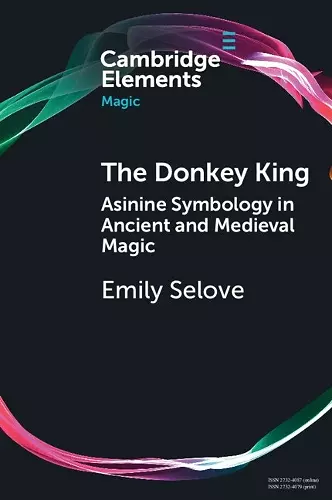The Donkey King
Asinine Symbology in Ancient and Medieval Magic
Format:Paperback
Publisher:Cambridge University Press
Published:21st Dec '23
Currently unavailable, and unfortunately no date known when it will be back

Asinine Symbology, focused on the phallus and the bray, has a double-edged potency that renders donkeys powerful in magic.
This Element reveals the double-sided nature of asinine symbology and explains why the donkey has served as the companion of both demons and prophets. In addition to Arabic literature and occult rituals, the Element refers to evidence from the ancient Near East, Egypt, and Greece, as well as to medieval Jewish and Christian texts.The 13th-century Arabic grimoire, al-Sakkākī's Kitāb al-Shāmil (Book of the Complete), provides numerous methods of contacting jinn. The first such jinn described, Abū Isrā'īl Būzayn ibn Sulaymān, arrives with a donkey. In the course of offering an explanation for his ritual, this Element reveals the double-sided nature of asinine symbology, and explains why this animal has served as the companion of both demons and prophets. Focusing on two nodes of donkey symbology—the phallus and the bray-it reveals a coincidentia oppositorum in a deceptively humble and comic animal form. Thus, the donkey, bearer of a demonic voice, and of a phallus symbolic of base materiality, also represents transcendence of the material and protection from the demonic. In addition to Arabic literature and occult rituals, the Element refers to evidence from the ancient Near East, Egypt, and Greece, as well as to medieval Jewish and Christian texts.
ISBN: 9781009074933
Dimensions: 230mm x 150mm x 5mm
Weight: 130g
74 pages